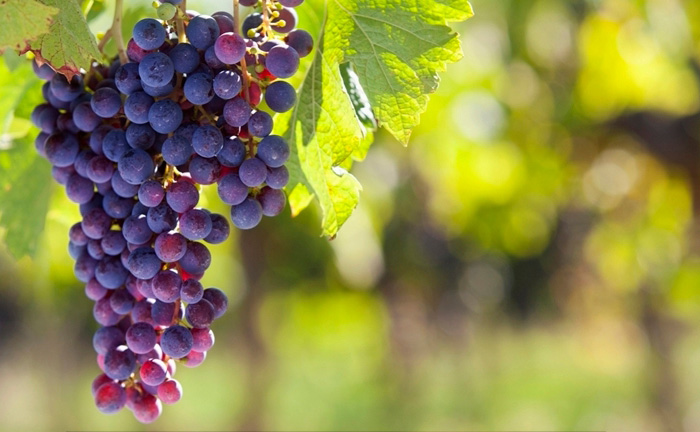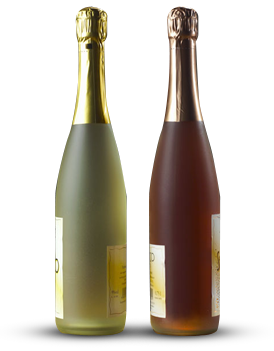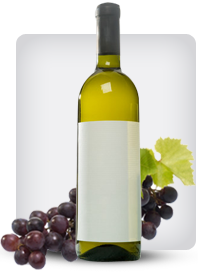

Tag: Wine
Choosing the Ideal Summer Wine
Posted onIf you plan to go on a picnic during the summer, packing a dependable wine bottle is a must in order to enjoy what the season has to offer. This is especially true if you plan to around some exotic locales and try to enjoy the best of what Mother Nature has to offer.
Your choice of wine, however, will dictate how well it will taste in the summer heat. Make the right choice, and you will be able to savour the flavour as best you can. Make the wrong one, though, and you may end up feeling terribly heavy and lousy for the rest of the trip. It is for this purpose that you need to select either a lighter wine or a heavier wine, and your choice will dictate how much you will enjoy them:
The lighter, fresher wines
White wines or red wines with a more fruity and tangy bite to them are the most common wines that can be found during summer. Their refreshing taste helps to uplift the spirits, while the low acid and alcohol content make them ideal for light snacking and picnicking.
These lighter, fresher wines are thus recommended for outdoor excursions that will either require a lot of activity before or afterwards, or for those who want to enjoy their summers sitting lazily on the beach or on the park. These come highly recommended for anyone and everyone who plans to enjoy the great outdoors during summer, and should definitely be selected over their heavier, headier cousins if any activities are scheduled for the day. The wine, of course, must match the food you plan to bring during your summer activities. White wine and the lighter red wines really do not go well with intense foods, so pack food that is easy on the tongue and light on the stomach.
The heavier, headier wines
Deep, dark red wine with high alcohol content is generally not recommended for summer activities. The heat will get to you even faster when you have a lot of alcohol in your system, and you may just end up feeling sluggish even when you still have a lot of things left to do in the day.
The exception to this, though, is the classic barbecue with huge chunks of beef steak on the grill. A few glasses of well chilled red wine will go well with the barbecue, provided you have little else to do during the day except wind down and relax. If you wish to do so, just make sure that you stay nice and cool if you do not want to feel like a huge sack of potatoes in the middle of the summer heat.
All in all, the lighter wines like white wine or fruity red wine are best enjoyed during the summer. Their light flavour helps to add some zing without putting you down, but may prove to be bland when mixed with heavier, more intense foods. If you plan a major barbecue with some dripping T-bone steaks at the side, then you may want to set aside a bottle or two of deeper, darker wine for that meal alone.
Resveratrol Level – Highest in Grapes Or Red Wine?
Posted onRed wine has a higher Resveratrol level than white wine. This is due to the fact that red wines are fermented extensively with the grapes skin on, than the white wines. As a result, a lot of the antioxidants including the product’s substance that are naturally found in the grape peels are taken out into the wine.
Also, grapes cultivated in moist surroundings have a propensity to have more of the substance than grapes cultivated in more dry surroundings. The assumption at the back of these events is that grapes produced in damp locations make more of it so as to combat harmful fungus. Grapes produced in dry locations do not have to make so much of it to live.
Wines that have been discovered to contain some of the most levels of the substance are Muscadine wines which come from the Muscadine grapes local to the moist South Eastern US; and pinot noir, from the fine Vinifera grape local to Burgundy, France. However, it is successfully grown in Oregon, California, Washington State, and New York as well. Pinot noir cultivated in more damp areas have a tendency to contain more of it.
The substance is present in the peels, seeds, and Pomace of grapes, but it is present in utmost strength in the peels. In this way, it is present in grape juice at the same time. The prominent grape types with comparatively increased levels of it are pinot noir grapes, Muscadine grapes, and concord grapes.
In most cases, grapes are excellent resources of vitamins C, B6, and B1 also potassium and manganese. Grapes are a good resource of in between meal alternative when calculating calories. Concord grapes have approximately sixty calories per cup.
The quantity of the substance in products can broadly differ. In pills there can be as small as five milligrams each pill at a pureness of ten percent or lower. On the other side of the scale, there are pills that offer close to 1000 milligrams of the substance per pill at a pureness of 99 percent.
What Is Great Wine Actually?
Posted onIf you ask someone what actually Great Wine is, then you should know that this question has both no answer and about a zillion answers at the same time. Why is that? The answer, in fact, depends on the person you ask, particularly the time of asking.
There is no one type of wine drinker first of all. With that fact as our basis for moving ahead, you can see where you might come up with a gazillion different answers. I know there is no number relating to a Gazillion, but let it be enough that there are plenty of different types.
The range extends from the down and out street wino to the extremely upscale wine clubs found in the eastern seaboard of America. And then of course there are our European cousins that consume much more wine than we Americans do routinely. So who you ask about great wine will definitely influence the answer you get back.
So is the question even worth asking? From my perspective it is in fact. But who you ask may come as a surprise. You should ask yourself. That’s right. What you think is a great wine is all that is really important when it comes to drinking the grape nectar. After all, it’s your taste buds you are concerned with and not someone else’s. You want to please yourself. You want to experience pleasure when consuming a glass of wine.
What will play into and affect that experience is the surroundings with which you find yourself when drinking some wine. Why is that important, well there are some wines that just do not fit some occasions. And if you don’t know at least some basics, your wine selection could end with a very discomforting result.
Wine basics 101: there are White, Red and Rose’ in the color realm. There are desert wines, wines that typically go well with certain types of foods and then there are wines that can be enjoyed just by themselves. Actually all wine fits this last category. It just depends on your mood and taste.
The days of wine snobbery are for the most part over. As the 21st century progresses, it has become more important for the individual to enjoy their selection than fitting a predetermined set of circumstances dictated by wine snobs. Those supposedly in the know.
While everything up till now is true, it’s pretty much an open game, there are a couple of things that you want to keep in mind. One is, you don’t want to select a desert wine such as Muscat to drink with dinner. That may seem like common sense and it is, but if you don’t know what Muscat is, then you could be at the front end of a very big surprise. Muscat is my favorite desert wine. As a child, I use to eat Muscat grapes fresh off the vine from wild grape vines that grew in our neighborhood. It was like free candy.
Up until recently, it was sort of taboo to drink white wine with red meat such as Beef, Veal, Venison or other game meats. Red was strictly the wine of choice. And to drink anything other was frowned upon by almost everyone. That is no longer true. It is completely acceptable to drink a white with a dinner steak. If that wine is to your liking, then do it.
So the old guidelines of food and wine pairings are not so much in vogue anymore. You will find that attitude at some upscale eateries that provide a wine Somalier. When faced with that situation, you just have to do what you feel comfortable doing. But other than that, great wine is the wine that makes you smile. Maybe even giggle a bit. Champagne bubbles popping about your nose is likely to cause that reaction more so than any other.
So….Great wine, what is it? It’s the wine that you love to drink, regardless of other’s opinions and ideas. So go ahead and have that Merlot with sauteed Prawns over Linguine or a nice Pinot Gregio with your Rib eye. You have no one to please but yourself.
Getting Wine Theme Kitchen Decor Work
Posted onWine theme kitchen decor can add a touch of the rustic Mediterranean to your home. It can make your kitchen look stylish and upscale, especially if you do it in a way that works well. If you are going to remodel then you may wish to consider wine theme kitchen decor if it is something that would be in keeping with your character and personal taste.
It is easy to find kitchen decor accessories and accent pieces that have a vineyard theme. You can purchase such items at the stores in your municipality or via the internet. However, making the wine theme kitchen decor work well is a little trickier. As with every other room that is decorated with a particular theme you can easily make things look excessively garish if you don’t put some thought into what you are doing.
Start with the Basics
If you choose wine theme kitchen decor it is best to start with the basics before you buy any accent pieces or accessories that are reminiscent of vineyards. Begin by choosing materials and paint colors. Natural rustic materials such as stone, marble and granite tend to compliment wine theme kitchen decor.
You should also choose paint colors that are in keeping with your vineyard theme. For instance, warm yellow, oatmeal, terra cotta, leaf green and a light reddish-purple that is similar to the color of grapes could work very well in such a kitchen. Once you have chosen your materials and colors you will then be in a position to choose matching wine theme kitchen decor accent pieces and accessories.
Keep it Simple
When you are searching for wine theme kitchen decor accessories try not to go over the top. If you insist on making sure that every picture, bowl, plate, table cloth, dish towel and window dressing has a vineyard theme then the overall effect will be course and excessive. It is better to limit the number of wine theme kitchen decor items. The idea here is to suggest rather than insist. Stick a wine rack or two, some decorative bottles, a few ceramics, a candle holder and a couple of prints that have a vineyard theme.
If you don’t want your kitchen to look too complicated you had best avoid tablecloths, drapes, place mats and wall clocks with a wine theme, especially if they clash with the rest of the decor. By keeping it simple your kitchen will look classy and chic. If you have made it work well your guests will be reminded of elegant country homes in the heart of rural Italy rather than the latest discounts on offer at their local liquor store.
More Malbec Wine Articles
Resveratrol Extract From Red Wine – Benefits Observed in Animals and Humans
Posted onAnimal studies are one of the methods used by scientists and the research community use to determine the advantages and drawbacks of chemical compounds. From pharmaceutical drugs and medicines to nutritional supplements, active ingredients must first be tested in real subjects before confirmed benefits can be established. One such antioxidant currently being tested is called resveratrol. It is a compound found in nature; the skin and seeds of grapes, red wine, some fruits, and nuts. You’ll likely find a product with resveratrol extract in the form of vitamin capsules, tea, or accompanying acai berries in weight loss pills. But does it really work? The researchers have put this antioxidant to the test with some surprising results.
The French are known for their exquisite food and richly-saturated, high-fat meals. It has puzzled scientists and doctors alike because the average American diet is very much like that of the French, but with approximately 30% more instances of heart and cardiovascular disease. The medical community has now discovered, through a series of experiments using resveratrol extract in mice, that the red wine that you drink is the deciding factor in the health of the French person’s lifestyle. In a July 3, 2008 article published on the U.S. Department of Health and Human Services web site, researchers reported that the affected obese mice showed less overall cholesterol levels, had stronger aortas, and developed fewer occurrences of heart and cardiovascular disease. This powerful compound seems to mimic some of the health phenomena that result from “caloric restriction”. This is the reason the French can eat the way they do and still remain relatively healthy throughout their lives.
Dr. Sinclair, who participated in the scientific study, cautioned that further studies must be done before associating a direct correlation between results in mice and that which would be experienced in humans. This is because the human body is a much more complex being than a mouse. The benefits of resveratrol extract were also observed in previous findings published, including a study dated June 3, 2008 by the Public Library of Science One. This study found that in addition to the benefits noted above, anti-aging effects were also observed in the animal subjects. This included alteration of the genetic expression of some factors involved in the cellular aging process in the body including slowed aging of cardiac cells.
Resveratrol extract is easy to buy from online stores from the comfort of home with as little as an Internet connection. But just like any other supplement, do the research prior to making a decision to add this supplement to your daily vitamin regimen. The Internet is a free source of reviews, contact information of the institutions that conducted the lab tests, and forums that allow visitors to post questions and read what others are saying. The research is clear; there are many health benefits associated with this amazing compound found in red wine!
Related Red Wine Articles
popular posts
-

Vegan Malbec Wine Options 2025: A Guide to Conscious Sipping As the demand for vegan products continues to rise, the wine industry is responding with greater transparency and more options for conscious consumers
12-23 2025Malbec, with its bold, fruity profile and rich history, is a favorite among red wine enthusiasts. But not all Malbecs are created equal when Read More
-

How to Decant Merlot Properly: A Guide to Unlocking Its Full Potential Merlot, with its plush texture and approachable profile of plum, cherry, and chocolate notes, is one of the world’s most beloved red wines
12-22 2025While often enjoyed straight from the bottle, taking the time to decant a Merlot can dramatically elevate the experience. Decanting serves two primary purposes: Read More

